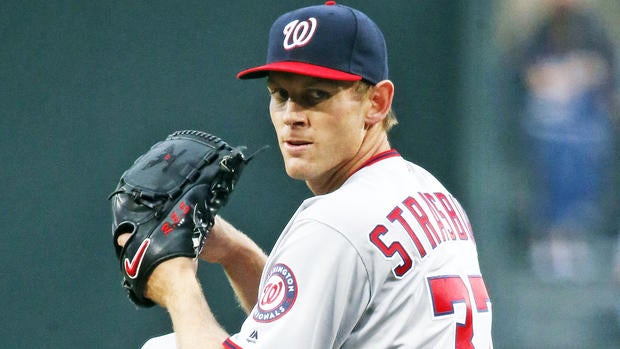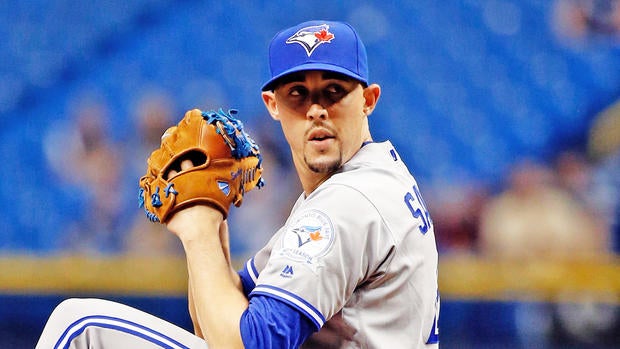The Blue Jays look to avoid the 'Strasburg Shutdown' mistake with Aaron Sanchez
For a while now, the Blue Jays have been debating among themselves the matter of Aaron Sanchez‘s mounting workload.
On the one hand, Sanchez is just 24, and he’s on pace to surpass by a comfortable margin his previous season high in innings. Given his high ceiling and that he’s a very hard thrower, the Jays have considered shifting him to a relief role in order to limit his innings.
On the other hand, Sanchez has by most measures been Toronto’s best starter this season, and the reigning AL East champs once again have designs on the World Series (the SportsLine Projection System at present gives the Jays a hefty 90.3 percent chance of making the playoffs).
So you want your best players in the roles that allow them to contribute the most value toward a championship. For Sanchez, that means keeping him in the rotation.

All of this, of course, is evocative of the “Strasburg Shutdown” of 2012, in which the Nationals, on their way to a 98-win season and an NL East title, opted in early September to end the season of 23-year-old ace-in-training Stephen Strasburg. Instead of going into the playoffs at full throttle, they did without the pitcher who would’ve made a start in the NLDS. In that NLDS, the Nats wound up getting bounced by the Cardinals in five games.
While “anecdote” is not the singular form of “data,” Strasburg wound up undergoing Tommy John surgery anyway. And then, of course, he wound up earning a big contract extension, and he’s presently among the front-runners for the NL Cy Young award.
Nats GM Mike Rizzo, though, wound up looking a bit foolish. He implied the Nats would be playoff regulars and that, in that light, shutting down Strasburg wasn’t that big of a deal.
The decision wound up being a bit of a cautionary tale: When you have a World Series-caliber roster, you don’t willfully diminish it just in time for the postseason. That’s especially the case consider how light the evidence is supporting hard innings caps as protective measures.

All of that brings us back to the Jays’ decision with regard to Sanchez. As MLB.com’s Gregor Chisolm writes, Jays GM Ross Atkins on Thursday announced that Sanchez would remain the rotation, with the pre-deadline addition of Francisco Liriano causing the rotation to now be a six-man affair. So when it comes to Sanchez’s usage, Toronto will tap the brakes instead of pump them, although Atkins left open the option of changing course later in the season.
This is sensible middle ground. This puts Sanchez in line for a modestly lower innings jump, and it keeps him in the rotation. After 21 starts, Sanchez’s 2.71 ERA leads the AL, and with the Jays still locked in tight race with the Orioles and Red Sox, they’re not in a position to pluck that kind of excellence from the rotation. Yes, the Jays’ rotation has indeed been a strength this season, but there’s likely no replacing what Sanchez has given them in 2016.
It also stands to reason that toggling a pitcher back and forth between relief and starting may not be good for arm health. After all, the starter takes the long view and paces himself when possible in the service of a deeper outing. The high-leverage reliever, meantime, is best served by breathing fire for two or three outs.
This is also something Sanchez has done in each of the last two Julys, abandoning his starting role for a relief role. Too much of that may not be a good thing, and the Jays, at this stage of Sanchez’s career, should probably pick a long-term lane for him. Starting, which he’s obviously proved he can do with sustained success, maximizes his value.
While noting things could still change on this front, the Jays are behaving wisely by keeping Sanchez in the rotation. If their World Series aspirations come to grief, then at least they won’t be able to point to their shelved young ace and wonder what might have been. There’s value in knowing you took your best shot when you could.